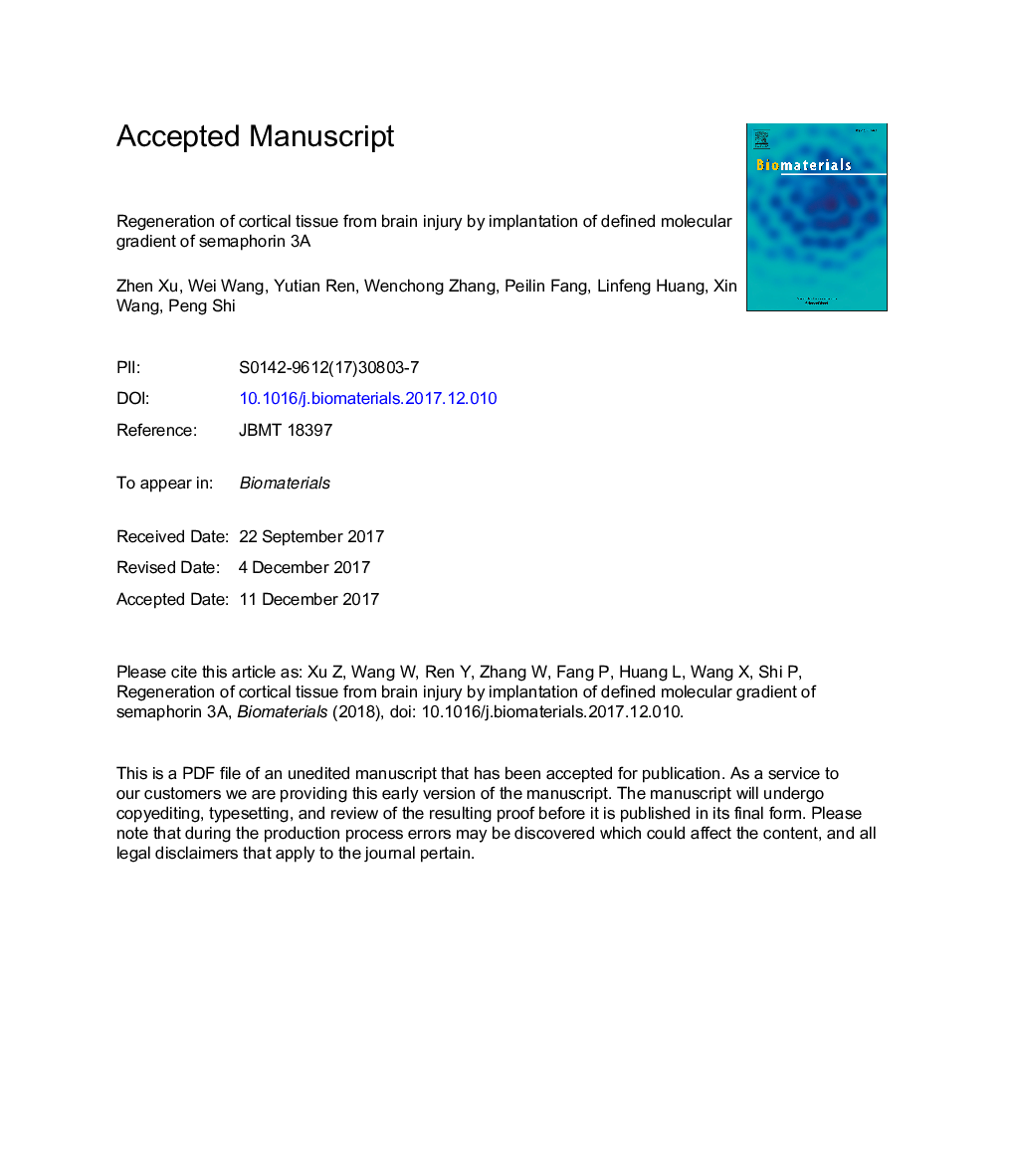| Article ID | Journal | Published Year | Pages | File Type |
|---|---|---|---|---|
| 6484702 | Biomaterials | 2018 | 37 Pages |
Abstract
Despite great efforts in the exploration of therapeutic strategies for treating brain injuries, it is still challenging to regenerate neural tissues and to restore the lost function within an injured brain. In this report, we employed a tissue engineering approach to regenerate cortical tissue from brain injury by implantation of defined semaphorin 3A (Sema3A) gradient packaged in a hydrogel based device. Over a thirty-day recovery period, the implanted Sema3A gradient was sufficient to induce substantial migration of neural progenitor cells to the hydrogel and to promote differentiation of these cells for neuroregeneration at the injury site. As revealed by molecular characterization and RNA transcriptome analysis, the regenerated tissues induced by Sema3A gradient exhibited significant similarity to normal cortical tissues. Many genes associated with neuronal migration and stem cell differentiation were significantly up-regulated. In addition, our result suggested a crosstalk between Sema3A and Wnt/β-catenin pathways in course of induced brain regeneration. This study demonstrated an innovative strategy to regenerate brain tissue after traumatic injury by controlling the in vivo chemotactic environment with unprecedented sophistication, and also resolved new insights about Sema3A's role in adult neurogenesis.
Related Topics
Physical Sciences and Engineering
Chemical Engineering
Bioengineering
Authors
Zhen Xu, Wei Wang, Yutian Ren, Wenchong Zhang, Peilin Fang, Linfeng Huang, Xin Wang, Peng Shi,
